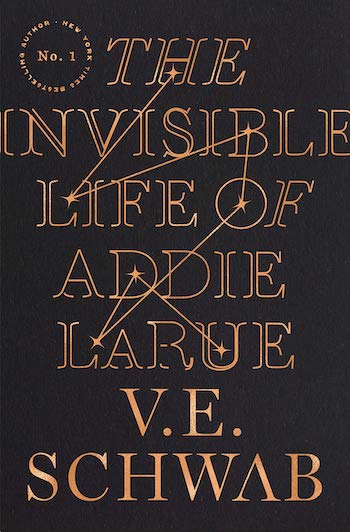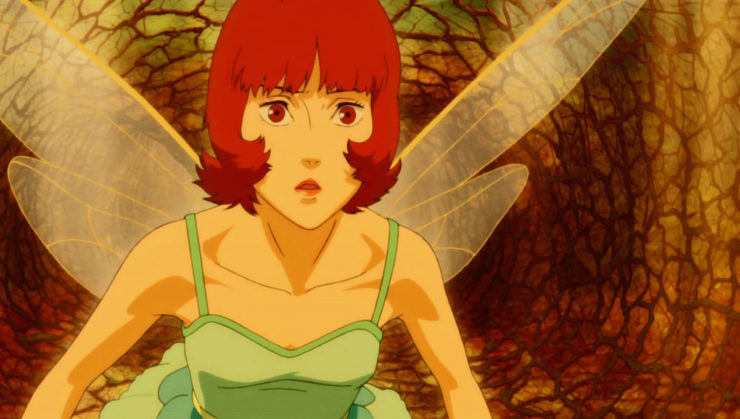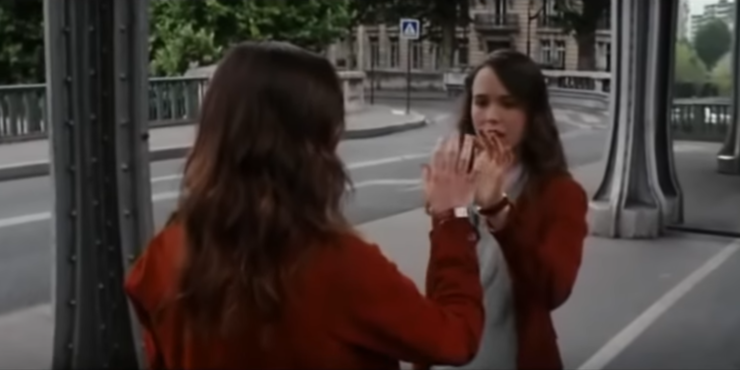You look in the mirror and find that one of your arms has been replaced by a purple tentacle. Or you glance at a clock and find that the numbers have been swapped for alien symbols. Or maybe you just look closely at your surroundings and realize that everything is brighter and stranger than it usually is. You’re dreaming, and now that you know you are, you can do anything you want. But you’re sixteen, so all you want is to undress that girl from your history class. You conjure her and begin to re-enact your daydreams. Her body is warm, you can feel her breath, but in an instant she’s gone, the walls melt away, and a monster looms over you. You’ve lost control.
When the lucid dreams I enjoyed as a teenager turned into nightmares, I stopped sleeping. I stayed up all night staring at the television, the volume as loud as it could be without waking the neighbors. Denied their nocturnal spotlight, my nightmares seeped into the daylight. Columns of spiders crawled up walls at the edges of my vision. I constantly felt like I was being followed. Sometimes, as I sat up all night, a shadowy golem kept me company. I never looked directly at it, but I’m certain it was the most hideous thing I could possibly imagine.
Have you ever realized in the middle of a dream that what’s happening isn’t real? That’s lucid dreaming. Experienced lucid dreamers can manipulate their dreams to live out their fantasies—or their fears. No art form is better positioned to explore the pleasures and perils of lucid dreaming than filmmaking, and no film has illuminated the connection between movies and dreams for more people than Inception. What’s disappointing is how few people have seen Satoshi Kon’s Paprika, a strikingly similar and arguably superior treatment of the same theme that was released in Japan four years before Christopher Nolan’s blockbuster. Both films rely on a device that enables people to enter others’ dreams, and both include elevators used to travel through them. More importantly, the two movies share a character: a woman so skilled at lucid dreaming that she can bend others’ dreams to her will.
In Inception, protagonist Cobb, who makes a living stealing proprietary information from the dreams of CEOs at the behest of their competitors, tackles his toughest job yet—convincing the heir-apparent of a massive energy corporation to break up the company by planting the idea in his dreams. Cobb’s first task is assembling the perfect team, so he recruits an architecture student skilled enough to build convincing dreamscapes. Enter Ariadne.
Buy the Book


The Invisible Life of Addie LaRue
Under Cobb’s tutelage, Ariadne learns to build elaborate dream-worlds, experiencing the boundless creative possibilities offered by a universe without physical laws. But when she changes too much in a dream with Cobb, his subconscious reasserts itself in the form of his deceased wife Mal, who stabs Ariadne. The student spends the rest of the film determined to learn more—not about lucid dreaming, but about Cobb. She invades his dreams, rides an elevator to the deepest level, and confronts the aggressive ghost of his wife. Despite witnessing firsthand how little control Cobb has over his subconscious, she pushes forward with the job. As Cobb’s projection of Mal endangers the team at every turn, Ariadne encourages him to make peace with his wife’s death. In the end, Ariadne’s quick thinking saves the mission, but Cobb receives the biggest reward.
In Paprika, Ariadne’s double is Dr. Atsuko Chiba. Chiba, a reserved research psychologist, is pioneering the field of dream therapy alongside Dr. Kosaku Tokita, the childlike inventor of the DC mini (this film’s dream-sharing device). To flout her boss’s ban on using the DC mini, Chiba treats patients disguised as an alter-ego named Paprika—a skilled navigator of dreams capable of shapeshifting and teleportation. As Paprika, Chiba treats a detective suffering from anxiety, posing as an elevator attendant to guide him through his recurring nightmare. After a renegade coworker uses the DC mini to merge dreams and reality, now-independent Paprika finds Chiba and urges her to flee the calamity. But Chiba ignores her alter-ego to chase after Tokita. Paprika and Chiba reunite to defeat the villain, but not before the dream Chiba’s been repressing plays out before Paprika’s eyes—the jaded doctor confessing her love for the naive inventor.
Given Paprika’s youthful look and flirtatious manner, and her job helping men decode their emotions by analyzing their dreams, you would be forgiven for assuming that she’s just another manic pixie dream girl. But Paprika exists for Chiba, not the men around her. By becoming Paprika (and then ignoring her), the restrained doctor learns to embrace the spontaneity and recklessness that dreaming requires.

Ariadne’s command of lucid dreaming clearly outweighs Chiba’s. Ariadne can create entire worlds. Chiba can only traverse them. If Ariadne is the architect who designs the museum, Chiba is the tour guide who leads you through it. But all of Ariadne’s skill lays fallow as she falls into the all-too-familiar role of emotional crutch for a broken man. And despite the fact that Chiba is an actual psychologist, her creation does far more good for Chiba than for her patient. While Ariadne exists to enable Cobb’s growth, Chiba creates another self to enable her own.
On the surface, Inception appears to have little in common with Wes Craven’s dream-horror masterpiece A Nightmare on Elm Street. But closer inspection reveals another shared character: a woman whose vivid dreams cause her to doubt her reality. In Inception, this woman is Mal. After spending what feels like decades in a dream, Mal unintentionally commits suicide, mistaking her real life for another dream. After her death, Mal is reduced to a bogeyman in her husband’s imagination, appearing in dreams at inopportune times to foil his best-laid plans. A Nightmare on Elm Street places another woman struggling to determine what is real at the center of the story.
I caught part of A Nightmare on Elm Street on television during one of my nocturnal vigils, and it terrified me so much that I had to change the channel. Had I managed to watch the whole thing, I might have found it inspiring rather than terrifying, despite the premise: A group of suburban teens have the same nightmare about a man wearing bladed gloves, then die in their sleep one by one.
Unlike Mal, Nightmare’s Nancy isn’t a stereotypical insane woman—we know her fears are founded from the beginning, when Freddy Kreuger murders her best friend. The next day, Nancy falls asleep in class and dreams of following her friend’s bloody body bag into a trap set by Kreuger. This encounter leads Nancy to use coffee and pills to keep herself awake, but she doesn’t run for long. As Kreuger claims more of her friends’ lives, Nancy hatches one plan after another to stalk him through her dreams and bring him into reality.
Mal makes only two choices in Inception. Her most dramatic action, the inadvertent suicide, is revealed midway through the film. Later, we discover that to convince her to leave the decades-long dream they shared, Cobb tampers with the spinning top she uses to differentiate dreams from reality (her “totem,” in Inception parlance), making her suicide inevitable. The climax of the film reveals Mal’s one free choice: During the years-long dream, she hides her totem to forget her world is a fantasy.
Nancy spends most of Nightmare trying to confront what she believes to be reality. Only at the end does she learn what Mal already knows—we each choose our own reality. She turns her back on her golem and tells him she knows he isn’t real, and, with that, he disappears. (I’m ignoring that asinine twist ending, and you should too.)
Dreams only have as much power as you give them. That’s why Ariadne encourages Cobb to address the guilt that fuels his overpowered projection of Mal. It’s why Chiba ignores Paprika, her own projection, and risks running through the dangerous dream in search of the man she loves. That truth dooms Mal to an untimely death caused by her inability to shake off the shadows of a dream, and frees Nancy to escape her darkest nightmares.
After about a year of lucid dreaming, I found that my eyes, always useless at great distances, were now failing to decipher words on any page less than six inches from my face. I had to complain to my parents a few times before they took me to an ophthalmologist. The doctor took a cursory glance at my eyes before levelling his accusation: “Have you been sleeping in your contacts?” I might’ve laughed if I weren’t so exhausted. A more thorough examination produced another question: “How long have you been sleeping with your eyes open?” No one had ever told me I sleep with my eyes open, but I knew it was true once he said it. Even in dreams, I couldn’t relinquish my hold on reality.
Rae Nieves is an essayist and critic who lives in Queens. Their work has been published in Autostraddle, Filter, The Urban Culturist, and more. Follow along on Twitter @raeniev.










